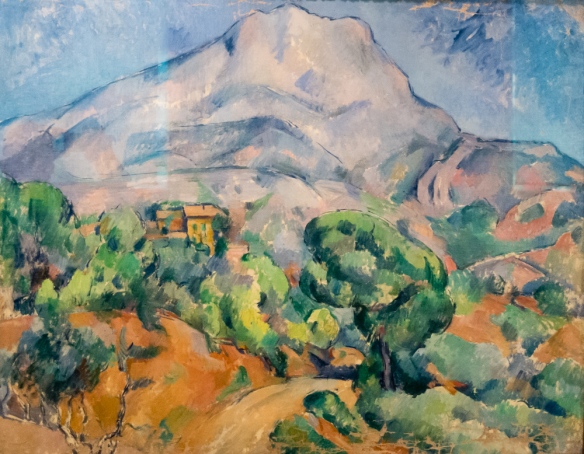
The triumphal arch, a monument to Russia’s victory in the war of 1812, atop The General Staff Building, one of the most famous architectural monuments in St. Petersburg, Russia, designed by the architect K. I. Rossi, built 1820 to 1830
After our tour of the European Masterpieces in The Hermitage Museum, St. Petersburg, Russia [see our previous blog post], we had the opportunity for a private tour of the Hermitage’s “Treasure Gallery” where the country’s amazing collection of state “jewels” is housed. “Containing the Hermitage’s most valuable collections of jewelry and gold, these heavily guarded galleries in two parts of the museum’s first floor are… a remarkable collection of priceless artifacts, from ancient Scythian and Greek gold work to exquisite decorations from St. Petersburg’s court jewelers, including Carl Faberge. Although the modern, high-security displays are somewhat soulless in comparison to the rest of the Hermitage, the opulence of the exhibits on display is overwhelming, including exquisite Scythian shield ornaments from the Crimea, jewel-encrusted icon casings, and intriguing historical curios such as Sir Francis Drake’s pendant.” – www.saint-petersburg.com
Following our tour of the Treasure Gallery of the Hermitage Museum in the Winter Palace, we crossed Palace Square and went through the arch of Carlo Rossi’s General Staff building that defines the south side of Palace Square. We then entered the so-called Hermitage XXI, the home of the museum’s superb collection of Impressionist and Postmodern art which relocated in five of the General Staff Buildings in 2014.

From the ceremonial entrance hall, the majestic staircase located in the largest of the five inner courts leads to the exhibition spaces in the east wing of the General Staff Building, now part of The Hermitage Museum, St. Petersburg, Russia
“The State Hermitage Museum is finally dragging itself into the modern age. The museum – which began life in the 18th century as the private art collection of the Romanovs and morphed spectacularly through Catherine the Great’s art grabs in the auction houses of Western Europe to become quite possibly the greatest collection of European art in history – has been in need of modern hanging space for some time. That this has taken a while is hardly surprising, given that the main museum buildings are historically significant palaces which cannot be altered easily and were not built to be public galleries in the first place.
“To mark the museum’s 250th anniversary, the Hermitage has reopened Carlo Rossi’s staggering early-19th-century General Staff Building, having totally refitted its interior. This is now a startling combination of sky-lit atriums, brushed concrete walls and spaces that could well have been newly built for the optimal display of modernist friezes and landscapes. The redeployment of the 19th- and 20th-century collections (formerly on display in the state rooms of the Winter Palace across the square) is now complete – the extra space means that in many cases new paintings, which had been hidden away in storage or in other buildings of the museum, have finally made it into the display.
“And this is no ordinary collection, but a roll call of the greats in modern European art. Many of the paintings here were culled by the Bolsheviks from the private collections of Russian businessmen Sergei Shchukin and the Morozov brothers, and even from that of German industrialist Otto Krebs, whose collection of Impressionist and post-Impressionist paintings was removed by the Red Army from the ruins of Nazi Germany in 1945. The paintings here include key works of Monet, Cézanne, Renoir, Degas, Gauguin, Seurat, Pissarro, Van Gogh, Matisse and Picasso, to name but a few.” – lonelyplanet.com

Claude Monet (1840 – 1926) “Meadows at Giverny”, 1888, oil on canvas, from S. I. Shchukin’s collection, The Hermitage Museum, St. Petersburg, Russia

Camille Pissarro (1830 – 1903) “Place du Theatre Francais, Paris”, 1898, oil on canvas, from S. I. Shchukin’s collection, The Hermitage Museum, St. Petersburg, Russia

Auguste Renoir (1841 – 1919) “Young Woman with a Fan”, 1880, oil on canvas, from I. A. Morozov’s collection, The Hermitage Museum, St. Petersburg, Russia

Paul Cezanne (1839 – 1906) “Bathers”, ca. 1890-1891, oil on canvas, from Otto Krebs’s collection, The Hermitage Museum, St. Petersburg, Russia

Paul Cezanne (1839 – 1906) “Mont Saint-Victoire”, ca. 1896-1898, oil on canvas, from I. A. Morozov’s collection, The Hermitage Museum, St. Petersburg, Russia

Paul Gauguin (1848 – 1903) “Les Parau Parau (Conversation)”, 1891, oil on canvas, from I. A. Morozov’s collection, The Hermitage Museum, St. Petersburg, Russia

Vincent Van Gogh (1853 – 1890) “The White House at Night””, June 1890, oil on canvas, from Otto Krebs’s collection, The Hermitage Museum, St. Petersburg, Russia

You chose some delightful pieces to share.
LikeLike